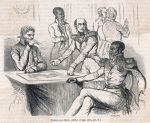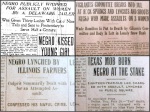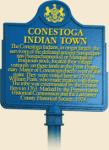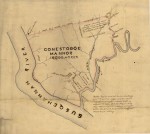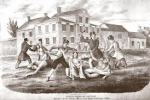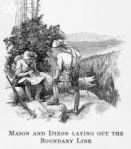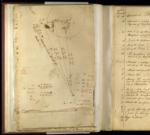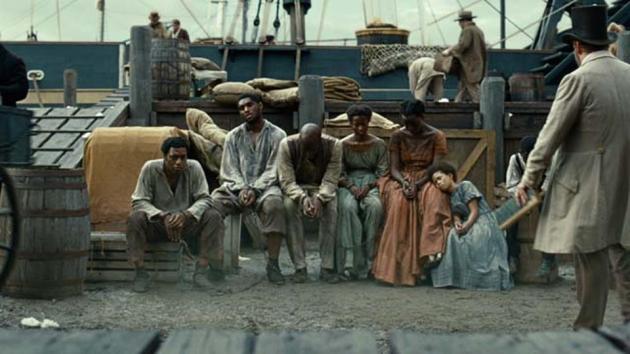
I thought about putting a list of theses and dissertations related to my book, In Search of an American Dream. Corrections and additions are more than welcome. I will come back to it and perhaps add a few links, etc.

Theses and Dissertations
Allen, William Ezra. “Sugar and Coffee: A History of Settler Agriculture in Nineteenth-Century Liberia.” Ph.D., Florida International University, 2002.
Ball, Erica Louise. “From Elevation to Uplift: Gender, Citizenship and Northern Black Political Culture on the Eve of the Civil War.” Ph.D., City University of New York, 2002.
Bonner, Donna Maria. “Garifuna Town/Caribbean Nation/Latin American State: Identity and Prejudice in Belize.” Ph.D., State University of New York at Buffalo, 1999.
Brown, Jarrett Hugh. “Black Masculinities as Marronage: Claude Mckay’s Representation of Black Male Subjectivities in Metropolitan Spaces.” Ph.D., The College of William and Mary, 2011.
Bulthuis, Kyle Timothy. “Four Steeples over the City Streets: Trinity Episcopal, St. Philip’s Episcopal, John Street Methodist, and African Methodist Episcopal Zion Churches in New York City, 1760–1840.” Ph.D., University of California, Davis, 2007.
Burnham, Thorald M. “Immigration and Marriage in the Making of Post-Independence Haiti.” ProQuest, UMI Dissertations Publishing, 2006.
Cameron, Christopher Alain. “To Plead Our Own Cause: African Americans in Massachusetts and the Making of the Antislavery Movement, 1630–1835.” Ph.D., The University of North Carolina at Chapel Hill, 2010.
Carter, Ralph Donald. “Black American or African: The Response of New York City Blacks to African Colonization, 1817-1841.” Dissertation, 1974.
Crozier, Karen Denise. “Pedagogies of Empowerment: Towards Institutional Change in a Local Black Church.” Ph.D., Claremont School of Theology, 2006.
Cryderman, Kevin. “Ghostly Spectators of History: Collective Identity, Regulative Frameworks and the Idiosyncratic Subject.” Ph.D., University of Rochester, 2009.
Curtis, Lesley Shannon. “Utopian (Post)Colonies: Rewriting Race and Gender after the Haitian Revolution.” Ph.D., Duke University, 2011.
Dain, Bruce Russell. “A Hideous Monster of the Mind: American Race Theory, 1787-1859.” Ph.D., Princeton University, 1996.
Daut, Marlene Leydy. “Science of Desire: Race and Representations of the Haitian Revolution in the Atlantic World, 1790-1865.” Ph.D., University of Notre Dame, 2009.
Davies, John. “Class, Culture, and Color: Black Saint-Dominguan Refugees and African-American Communities in the Early Republic.” Ph.D., University of Delaware, 2008.
de Briffault, E. Christian. “The Haitian Revolution, 1791–1803. Race, Slavery, and the Balance of Power: A Comparative Analysis.” D.A., St. John’s University (New York), 2004.
De Vidas, Albert. “The Foreign Relations of Haiti in Hemispheric Affairs from Independence to Occupation, 1804-1915.” Book; Archival Material, NYU, 1971.
DeFay, Jason Bradley. “Identity Matters: Immigration and the Social Construction of Identity in Garifuna Los Angeles.” Ph.D., University of California, San Diego, 2004.
Den Hartog, Jonathan J. “”Patriotism and Piety”: Orthodox Religion and Federalist Political Culture.” Ph.D., University of Notre Dame, 2006.
Diemer, Andrew Keith. “Black Nativism: African American Politics, Nationalism and Citizenship in Baltimore and Philadelphia, 1817 to 1863.” Ph.D., Temple University, 2011.
Dowdy, Calenthia S. “Youth, Music, and Agency: Undoing Race, Poverty and Violence in Rio De Janeiro, Brazil.” 3498194, American University, 2012.
Dyck, David Wayne. “The Missionary Church in the Dominican Republic.” Dissertation, 1975.
Edmondson, Philip N. “The St. Domingue Legacy in Black Activist and Antislavery Writings in the United States, 1791–1862.” Dissertation, 2004.
Egea Fernandez-Montesinos, Alberto. “La Construccion Del Imaginario Literario Andaluz: Entre La Imagi-Nacion Folclorica Y Las Margi-Naciones Del Sur.” Ph.D., Emory University, 2000.
Fanning, Sara Connors. “Haiti and the U.S.: African American Emigration and the Recognition Debate.” Ph.D., The University of Texas at Austin, 2008.
Fellows, Kristen R. “African Americans from “Back Yonder”: The Historical Archaeology of the Formation, Maintenance, and Dissolution of the American Enclave in Samana, Dominican Republic.” ProQuest, UMI Dissertations Publishing, 2013.
Flemming, Tracy K. “Negro: Travel and the Pan-African Imagination During the Nineteenth Century.” Ph.D., University of Michigan, 2010.
Fleszar, Mark J. “The Atlantic Legacies of Zephaniah Kingsley: Benevolence, Bondage, and Proslavery Fictions in the Age of Emancipation.” Ph.D., Georgia State University, 2013.
Franks, Julie Cheryl. “Transforming Property: Landholding and Political Rights in the Dominican Sugar Region, 1880-1930.” Ph.D., State University of New York at Stony Brook, 1997.
Fuste, Jose I. “Possible Republics: Tracing the ‘Entanglements’ of Race and Nation in Afro-Latina/O Caribbean Thought and Activism, 1870–1930.” Ph.D., University of California, San Diego, 2012.
Gaffield, Julia. “”So Many Schemes in Agitation”: The Haitian State and the Atlantic World.” Ph.D., Duke University, 2012.
Garcia, Armand. “Jose Marti and the Global Dimensions of Late Nineteenth-Century Cuban Nation Building.” Ph.D., Washington State University, 2006.
Glenn, James Hogan. “Andrew Johnson and the Dominican Republic.” Creighton University, 1967.
Gonzalez, Johnhenry. “The War on Sugar: Forced Labor, Commodity Production and the Origins of the Haitian Peasantry, 1791–1843.” Ph.D., The University of Chicago, 2012.
Greene, Ousmane Kirumu. “Against Wind and Tide: African Americans’ Response to the Colonization Movement and Emigration, 1770–1865.” Ph.D., University of Massachusetts Amherst, 2007.
Grivno, Max L. “”There Slavery Cannot Dwell”: Agriculture and Labor in Northern Maryland, 1790–1860.” Ph.D., University of Maryland, College Park, 2007.
Hanks, Iyelli Ichile. “Black Magic Woman: Towards a Theory of Africana Women’s Resistance.” Ph.D., Howard University, 2011.
Head, David. “Sailing for Spanish America: The Atlantic Geopolitics of Foreign Privateering from the United States in the Early Republic.” Ph.D., State University of New York at Buffalo, 2010.
Hetrick, Matthew J. “African American Colonization and Identity, 1780-1925.” ProQuest, UMI Dissertations Publishing, 2013.
Hidalgo, Dennis Ricardo. “From North America to Hispaniola: First Free Black Emigration and Settlements in Hispaniola.” Ph.D., Central Michigan University, 2003.
Hudson, Linda Sybert. “Jane Mcmanus Storm Cazneau (1807-1878): A Biography.” ProQuest, UMI Dissertations Publishing, 1999.
Jackson, James O’Dell, III. “The Origins of Pan-African Nationalism: Afro-American and Haytian Relations.” Ph.D., Northwestern University, 1976.
Jones, Christina Violeta. “Revolution and Reaction: Santo Domingo During the Haitian Revolution and Beyond, 1791–1844.” Ph.D., Howard University, 2008.
Kaisary, Philip James. “The Literary Impact of the Haitian Revolution.” University of Warwick, 2008.
Kaussen, Valerie Mae. “Romancing the Peasant: History and Revolution in the Modern Haitian Novel.” Ph.D., University of California, Santa Cruz, 2000.
Kwon, Yun Kyoung. “Ending Slavery, Narrating Emancipation: Revolutionary Legacies in the French Antislavery Debate and “Silencing the Haitian Revolution,” 1814–48.” Ph.D., The University of Chicago, 2012.
Leung, Ka Yee. “Embodied Cultural Cognition: How Culture Is Carried by Our Bodily Experiences?” Ph.D., University of Illinois at Urbana-Champaign, 2007.
Lovit, Alex. ““The Bounds of Habitation”: The Geography of the American Colonization Society.” University of Michigan, 2011.
Malka, Adam C. “The Haitian Evolution: Emigration and Diasporan Consciousness in Nineteenth Century America.” University of Wisconsin–Madison, 2005.
Márquez Macías, Rosario. “La Emigración Española a América, 1765-1824.” Universidad de Oviedo, Servicio de Publicaciones, 1995.
Matijasic, Thomas David. “Conservative Reform in the West: The African Colonization Movement in Ohio 1826-1839 ” Dissertation, 1982.
Matthews, Gelien. “Slave Rebellions in the Discourse of British Anti-Slavery.” University of Hull, 2002.
McCarthy, Timothy Patrick. “A Culture of Dissent: American Abolitionism and the Ordeal of Equality.” Ph.D., Columbia University, 2006.
McDaniel, William Caleb. “Our Country Is the World: Radical American Abolitionists Abroad.” Ph.D., The Johns Hopkins University, 2006.
Menely, Tobias. “Cultivated Sympathies: Human Sentiments and Animal Subjects in the Long Eighteenth Century.” Ph.D., Indiana University, 2006.
Mills, Brandon. “Exporting the Racial Republic: African Colonization, National Citizenship, and the Transformation of U.S. Expansion, 1776–1864.” Ph.D., University of Illinois at Urbana-Champaign, 2011.
Mongey, Vanessa. “Cosmopolitan Republics and Itinerant Patriots: The Gulf of Mexico in the Age of Revolutions (1780s–1830s).” Ph.D., University of Pennsylvania, 2010.
Morales, Edgardo A Pérez. “Itineraries of Freedom Revolutionary Travels and Slave Emancipation in Colombia and the Greater Caribbean. 1789-‐1830.” University of Michigan, 2013.
Morales, JosÈ. “The Hispaniola Diaspora, 1791-1850 Puerto Rico, Cuba, Louisiana, and Other Host Societies.” 1987.
Moulton, Amber D. “Marriage Extraordinary: Interracial Marriage and the Politics of Family in Antebellum Massachusetts.” Ph.D., Harvard University, 2011.
Myers, Amrita Chakrabarti. “Negotiating Women: Black Women and the Politics of Freedom in Charleston, South Carolina, 1790-1860.” Rutgers University, 2005.
Nessler, Graham Townsend. “A Failed Emancipation? The Struggle for Freedom in Hispaniola During the Haitian Revolution, 1789–1809.” ProQuest, UMI Dissertations Publishing, 2011.
Nwankwo, Ifeoma Chinwe Kiddoe. “Cosmopolitan Consciousness: Inter-American Engagements in the Scripting of African-American and Caribbean Identities.” Duke University, 1999.
Oliver, Albert G. “The Protest and Attitudes of Blacks Towards the American Colonization Society and the Concepts of Emigration and Colonization in Africa 1817 – 1865.” Dissertation, 1978.
Ozuna, Ana. “Reclaiming Blackness through the Literary Figure of the Maroon in Dominican Literature.” Ph.D., State University of New York at Buffalo, 2009.
Page, Sebastian Nicholas. “The American Civil War and Black Colonization.” D.Phil., University of Oxford (United Kingdom), 2012.
Pamphile Miller, Chrislaine. “”‘Blessed Are the Peacemakers”: African American Emigration to Haiti, 1816-1826.” ProQuest, UMI Dissertations Publishing, 2013.
Peña, Julissa. ““Yo Soy Negro, Pero Negro Blanco:” Hispanicity, Antihaitianismo and Genocide in the Dominican Republic.” Wesleyan University, 2012.
Phillips, William M. “Nightmares of Anarchy and Dreams of Revolution in English and American Literature, 1870-1910.” Ph.D., The University of North Carolina at Chapel Hill, 1996.
Pierce, Jennifer J. “Discourses of the Dispossessed : Saint-Domingue Colonists on Race, Revolution and Empire, 1789-1825.” 2005.
Piggush, Yvette Renee. “Governing Imagination: American Social Romanticism, 1790–1840.” Ph.D., The University of Chicago, 2007.
Polgar, Paul J. “Standard Bearers of Liberty and Equality: Reinterpreting the Origins of American Abolitionism.” ProQuest, UMI Dissertations Publishing, 2013.
Ramlagan, Michelle N. “(Re)Placing Nation: Postcolonial Women’s Contestations of Spatial Discourse.” Ph.D., University of Miami, 2011.
Riley, Padraig Griffin. “Northern Republicans and Southern Slavery: Democracy in the Age of Jefferson, 1800–1819.” Ph.D., University of California, Berkeley, 2007.
Rivas, Christine D. “Power, Race, Class and Gender in Colonial Santo Domingo: An Analysis of Spanish Dominican Marital Patterns in the Archbishopric of Santo Domingo, 1701–1801.” Ph.D., Carleton University (Canada), 2008.
Roberts, Neil Douglas. “Freedom as Marronage: The Dialectic of Slavery and Freedom in Arendt, Pettit, Rousseau, Douglass, and the Haitian Revolution.” University of Chicago, Department of Political Science, 2007.
Rodriguez, Nestor E. “Configuraciones Y Desfiguraciones De Lo Nacional En La Literatura Dominicana Contemporanea.” Ph.D., Emory University, 2003.
Sacks, Dan. “The Historical Traditions of Nat Turner.” 2008.
Sagas, Ernesto. “Antihaitianismo in the Dominican Republic.” 1993.
Salt, Karen N. “The Haitian Question.” Purdue University, 2011.
Scallet, Daniel. “”This Inglorious War”: The Second Seminole War, the Ad Hoc Origins of American Imperialism, and the Silence of Slavery.” ProQuest, UMI Dissertations Publishing, 2011.
Schoeppner, Michael Alan. “Navigating the Dangerous Atlantic: Racial Quarantines, Black Sailors and United States Constitutionalism.” UNIVERSITY OF FLORIDA, 2010.
Scruggs, Dalila. “”The Love of Liberty Has Brought Us Here”: The American Colonization Society and the Imaging of African-American Settlers in Liberia.” ProQuest, UMI Dissertations Publishing, 2010.
Sesay, Chernoh Momodu, Jr. “Freemasons of Color: Prince Hall, Revolutionary Black Boston, and the Origins of Black Freemasonry, 1770–1807.” Ph.D., Northwestern University, 2006.
Shabaka, Segun. “An Afrocentric Analysis of the 19th Century African-American Migration to Haiti: A Quest for the Self-Determining Community.” Ph.D., Temple University, 2001.
Smith, Eleanor Valerie. “Mate Selection as an Indicator of Ethnic Identity and Maintenance: A Case Analysis of the “Immigrants” in Samana, Dominican Republic (Blacks, Afro-American).” Ph.D., University of Florida, 1986.
Smith, Reiland Rabaka. “Africana Critical Theory: From W. E. B. Du Bois and C. L. R. James’s Discourse on Domination and Liberation to Frantz Fanon and Amilcar Cabral’s Dialectics of Decolonization.” Ph.D., Temple University, 2001.
Stringer, Rozanne McGrew. “Hybrid Zones: Representations of Race in Late Nineteenth-Century French Visual Culture.” Ph.D., University of Kansas, 2011.
Tagliamonte, Sali Anna. “A Matter of Time: Past Temporal Reference Verbal Structures in Samana English and the Ex-Slave Recordings.” Ph.D., University of Ottawa (Canada), 1991.
Tillman, Ellen D. “Imperialism Revised: Military, Society, and Us Occupation in the Dominican Republic, 1880-1924.” University of Illinois at Urbana-Champaign, 2011.
Torbett, David James. “Theology and Slavery: Charles Hodge and Horace Bushnell on the Slavery Question.” Ph.D., Union Theological Seminary & Presbyterian School of Christian Education, 2002.
Torres Casillas, Pablo Samuel. “Los Cronistas De La Americanizacion: Representacion Y Discurso Colonial En Puerto Rico (1898–1932).” Ph.D., University of Puerto Rico, Rio Piedras (Puerto Rico), 2013.
Treudley, Mary Bosworth. “The United States and Santo Domingo, 1789-1866.” 1916.
Twa, Lindsay Jean. “Troubling Island: The Imagining and Imaging of Haiti by African-American Artists, 1915–1940.” ProQuest, UMI Dissertations Publishing, 2006.
Van Sickle, Eugene S. “A Transnational Vision: John H. B. Latrobe and Maryland’s African Colonization Movement.” ProQuest, UMI Dissertations Publishing, 2005.
Walker, James A. . “Present Accounted For: Prosody and Aspect in Early African American English.” University of Ottawa, 2000.
Walton-Hanley, Jennifer A. “Reversing the Middle Passage : The American Colonization Society and Race Relations, 1816-1964.” [s.n.], 2009.
Walton-Hanley, Jennifer A. “Reversing the Middle Passage: The American Colonization Society and Race Relations, 1816–1964.” Ph.D., University of Kentucky, 2009.
Weir, Donna Maxine. “Beyond Binaries: Creolized Forms of Resistance in African-American and Caribbean Literatures.” Ph.D., University of California, Berkeley, 2000.
Wirzbicki, Peter. “Black Intellectuals, White Abolitionists, and Revolutionary Transcendentalists: Creating the Radical Intellectual Tradition in Antebellum Boston.” Ph.D., New York University, 2012.
Woodcock, Lowell. “Islands of Inequality: The Environmental History of Tobago and the Crisis of Development and Globalisation in the Caribbean 1763–2007.” University of Sussex, 2010.
Yarema, Allan E. “The American Colonization Society : An Avenue to Freedom?” University Press of America, 2006.
Younger, Karen Virginia Fisher. ““Africa Stretches Forth Her Hands Unto You”: Female Colonization Supporters in the Antebellum United States.” The Pennsylvania State University, 2006.




